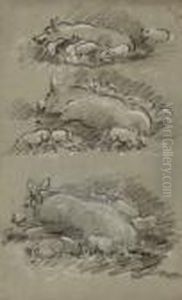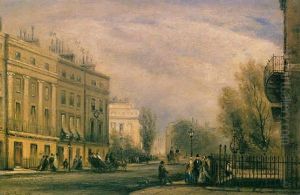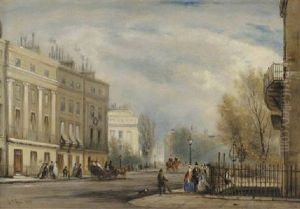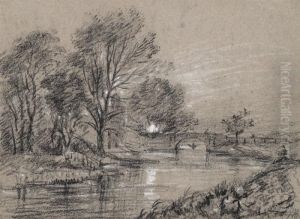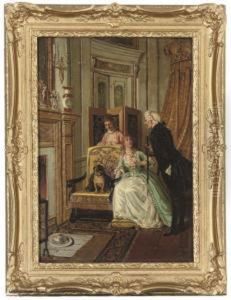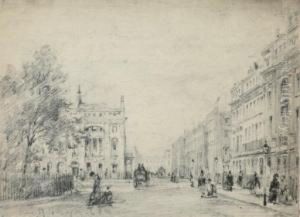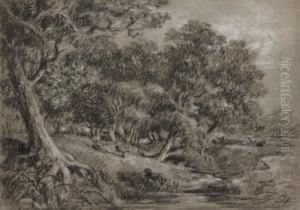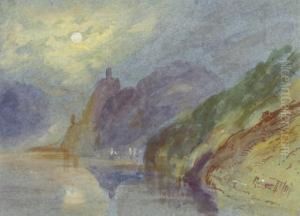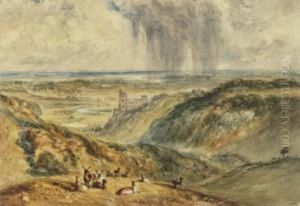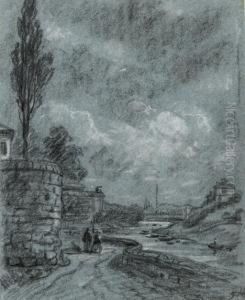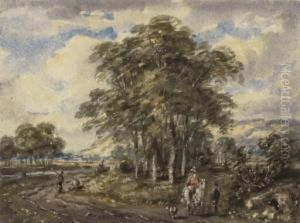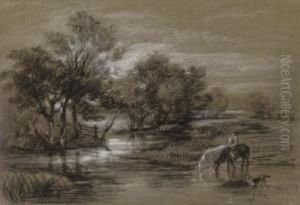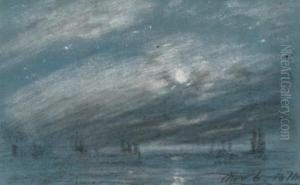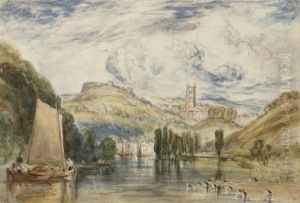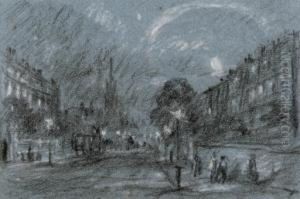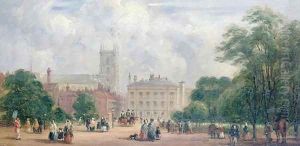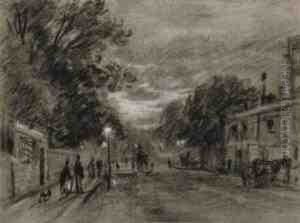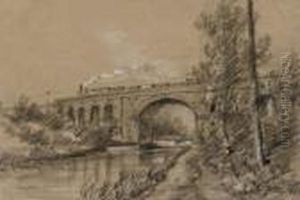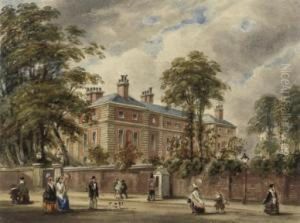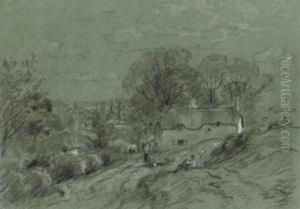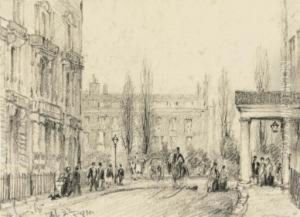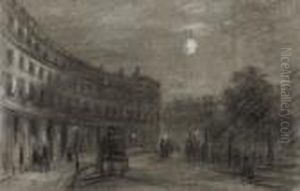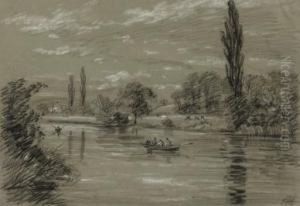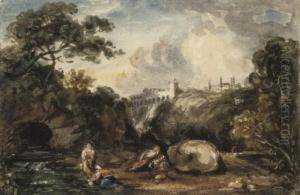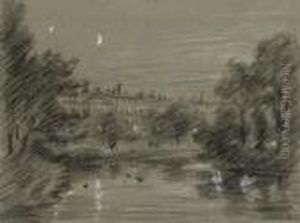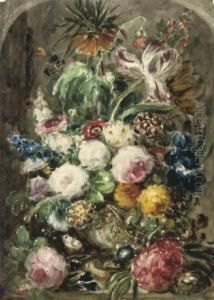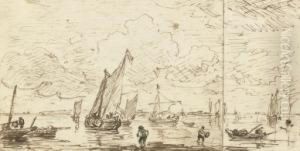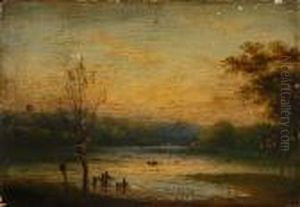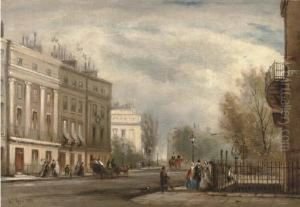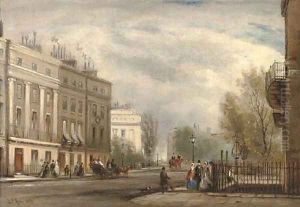George James Rowe Paintings
George James Rowe was an English artist, illustrator, and engraver known primarily for his landscape and architectural works. Born in London in 1807, Rowe grew up in a period of significant industrial and cultural change, which influenced the arts in Britain. His work was part of the Victorian era's passion for documenting the rapidly changing urban and rural landscapes.
Rowe was not only a skilled artist but also an entrepreneur. He established his own lithographic firm, G.J. Rowe & Co., which contributed to his financial stability and allowed him to publish his own works. His lithographs and engravings were often of high quality and depicted a broad range of subjects, including buildings, monuments, and landscapes.
Throughout his career, Rowe worked on several notable projects. He contributed illustrations to books and periodicals of the time, which were well received and helped to popularize his work. His attention to detail and ability to capture the essence of his subjects were admired by his contemporaries.
Rowe's works serve as historical documents that provide insight into the visual culture of 19th-century England. They capture the essence of a time when the country was undergoing significant transformation due to the Industrial Revolution.
George James Rowe died in 1883, leaving behind a legacy as a chronicler of his time through his art. His works remain valuable to historians, art collectors, and enthusiasts who have an interest in Victorian England and its landscapes.
